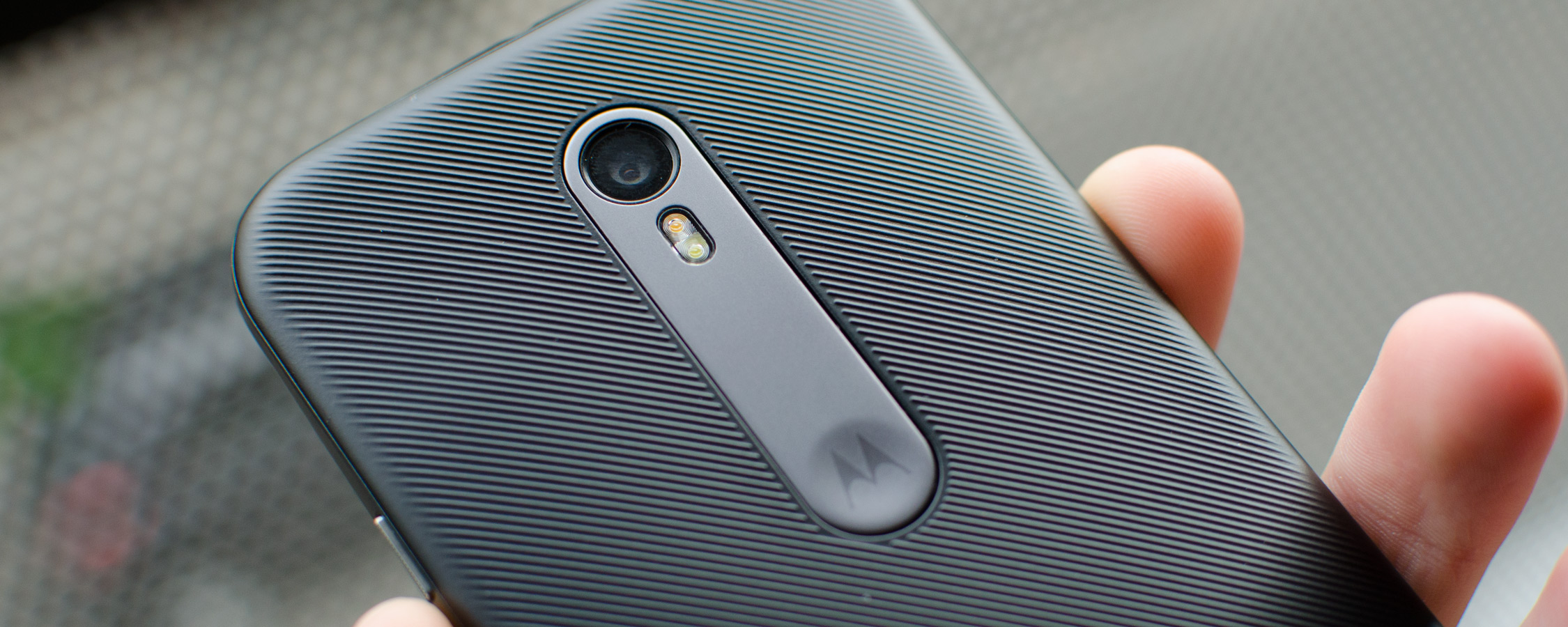Camera
One of the major updates to the Moto G is in the camera department. Motorola has ditched the fairly average 8-megapixel Sony Exmor RS IMX179 sensor used in the 2014 model in favour of a newer, 13-megapixel Sony IMX214 in the 2015 model. The IMX214 has been used in several flagships over the past year, including the OnePlus One and Google Nexus 6, and now the sensor has found its way into an entry-level handset.
The IMX214 is a 1/3.06" sensor with a total resolution of 4224 x 3400 and 1.12 µm pixels. The pixel size of this sensor is smaller than that of the IMX179, though Motorola has used an f/2.0 lens at an effective focal length of 26mm. By default, the Moto G 2015 captures 9.7-megapixel images in a 16:9 aspect ratio, but this can be changed to 4:3 with a full 13-megapixels in the camera app.
The front-facing camera has also received an upgrade. Motorola has gone with a 5-megapixel 1/5" S5K5E2 sensor with 1.12 µm pixels and an f/2.2 lens, and again this camera captures 16:9 images by default.
The 2015 Moto G's camera is a very decent upgrade on its predecessor. The newer Sony sensor Motorola has gone with produces photos with better dynamic range and better detail than before, and combined with improved image processing, we're seeing a rear camera that's better in essentially every way.
Starting with the resolution, the 13-megapixel sensor provides a good upgrade in terms of detail and clarity. It's not quite as good as the latest 16-megapixel sensors we're seeing in flagships like the Galaxy S6, and some fine detail can be lost when looking at 100% crops of the Moto G 2015's photos due to a combination of sensor imperfections and post processing. However for the most part, you're getting a more highly detailed image from the 2015 Moto G, especially in wide shots.
The 2014 Moto G's camera suffered from a lack of dynamic range and contrast, which made some images look somewhat washed out and less vibrant than they should be. This has been mostly resolved through a sensor upgrade: the Moto G 2015's images have much greater color depth and better contrast, which helps especially for those wide shots in good conditions that usually feature a mix of shadows and highlights.
Again, we're not talking about a camera that's rivalling the Samsung Galaxy S6 or the LG G4, as these two devices have far superior rear shooters with features such as optical image stabilization. But for a budget device, the 2015 Moto G's camera is very respectable and easily holds its own against the current crop of mid-range handsets and even some last-gen flagships.
The most impressive part of the Moto G's camera is the HDR mode, which by default will automatically activate where necessary. The HDR mode does a fantastic job of making those high-contrast scenes come to life, with significantly better visible detail in areas of highlights and shadows. It doesn't get it right all time, sometimes making colors look unrealistic or just plain odd, though most of the time it's very capable.
The Moto G's camera isn't without issues: the camera app is absolutely terrible. Motorola has put in barely any effort into this area of the camera experience, and it often makes it hard to capture a great image from the generally decent camera hardware.
The camera app uses a very simple tap-to-capture interface, which I don't particularly like. While it may be easier to have one-tap capture, you're relying on automatic focus to not only focus correctly, but also to choose to right area to focus on. In my experience using the Moto G 2015, autofocus often fails to get one or more of these things correct, which leads to an incorrectly-focused image.
There is an alternate capture mode that you can enable, which sees a ring placed on the display that you can move around to select a focal point and spot-metering zone. This works to a point, but it's not as quick as the standard tap-to-focus mode we see implemented on nearly every other smartphone. Motorola really needs to look at rival camera apps to see what works and what doesn't.
The other features found in the camera app, and there's not many of them, are hidden in an awkward slide-out ring. In here you'll find the panorama mode and options to force the HDR mode on, as well as flash controls, image size, and video size. Again, Motorola has done the bare minimum here to create a functional camera app, so nothing of note is really included in here.
As for video, the Moto G captures 1080p30 video at 17 Mbps using a H.264 format. Quality from the video is good without being amazing, so it's generally suitable for the odd recording here and there. Audio quality is acceptable and basically what you'd expect from an entry-level device.










